Karen Haydock

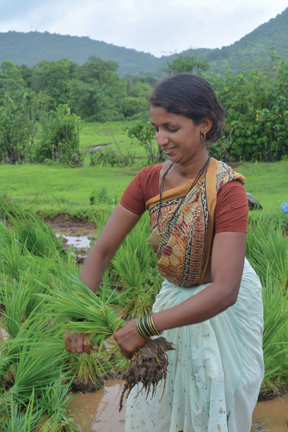
This is a picture of Smita doing science.
Of course, it is not the sort of picture that first comes to your mind when you think of a scientist. When we ask children to draw pictures of a scientist, they usually draw a man. This is not wrong – we all know that in our patriarchal society, most famous scientists are men.
But does this mean that women have not been doing science? Or, does it mean that the sort of science they have been doing has not been done by individuals – or famous individuals?
If we look more deeply to see what science is, we see that science is not a list of ‘facts’ – it is something that people do.
We will discuss what Smita did and why we think what she did is important science. However, we are not trying to single her out as a particularly important individual. The science she did is social rather than individual – as all science actually is.
Looking at these pictures, it appears that Smita, her husband, Bhimraj and father-in-law Namdev are doing traditional paddy cultivation on their small family farm (in Raigad District, near Mumbai). They plough with a pair of bullocks. There is no irrigation. They do transplanting, harvesting and winnowing by hand. They carry things by head loads and bullock cart. It seems unchanged over hundreds of years… or is it?

As science educators, we understood something about how science is done. We had heard that following tradition is different from doing science and we wondered what it is and how traditional ways are passed along from one generation to the next.
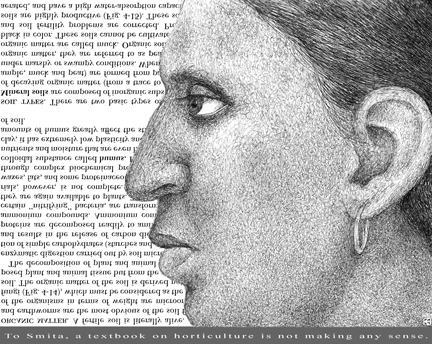
We asked Smita and her family to show us how to cultivate paddy and we kept going to their field throughout the 2015 kharif season to learn – and to learn how they learned and taught each other. They taught us that these ‘traditional’ methods of practicing and learning cultivation were not what they first appeared to be. When we asked Smita how she learned to do it, she replied,

(Learned how means what? At home the elders just used to do it, nah?… Like that, looking at them, even we learned.)
Smita asks a very interesting question: what is learning? The family doesn’t ‘learn’ in the sense that children ‘learn’ in school. Smita says they just pick it up from the older generation. And a lack of learning is not what constrains their cultivation.
In other conversations, Smita said that there was practically nothing that they learned in school that helps them in cultivation – and that this is okay because the purpose of education is to get out of agriculture. Cultivating and school ‘learning’ are two different worlds.
Smita and the other members of the family showed us that they were actually learning by doing – learning and developing paddy cultivation by cooperatively doing complex, hard work with their hands and minds. We will illustrate the nature of their work with a few examples. These are not steps that occur in a fixed order, but a network of interdependent aspects.
a) Questioning
Smita asked some important questions: Will the rab for the nursery plot be the same if we add fewer branches? When will it rain? When should we harvest? Why are these leaves yellow? How can our children survive if they do not get a good education so that they can get good jobs instead of doing farming?
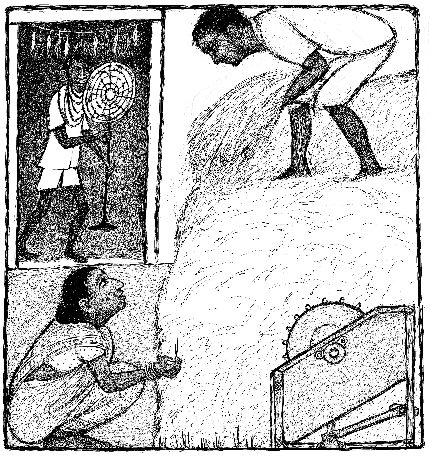
Questioning is the basis of all science and these questions are not inherently different from the sorts of questions any scientists ask.
When starting the threshing, Smita noticed that some of the paddy was sprouting at the bottom of the harvested stack. Observing that it was because it was too wet, she asked what they should do about it:

(Then put that part under the fan for drying?). The dampness was a serious problem that had to be solved collectively, taking into consideration the causes, effects different solutions may have, as well as the time, cost, and amount of work required. They would love to have an indoor, humidity-controlled storage place that would solve this problem. But under capitalism, such solutions are only for rich companies – who then get richer by hoarding crops and selling when they can get higher prices.
b) Hypothesizing and testing
Each season, the family selects seeds to plant the following year from the present crop of the local variety of paddy they produce. In this way, they are breeding paddy.
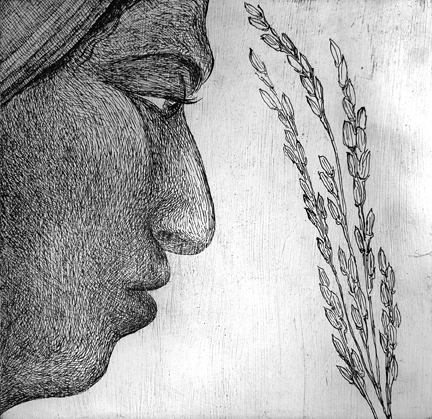
Based on their observations and past experience they make a hypothesis as to which seeds will be best. They test their hypothesis by cultivating the seeds, observing the resulting harvest and comparing it to past harvests. This is similar to the way any scientists work. And over the past centuries, peasants have succeeded in using this method to develop most of the crops we presently depend on.
The selection is made not just on the basis of what the seeds look like – the characteristics of the entire plant are considered, as well as the part of the field in which it grew. They select seeds from plants in the centre of the field because they find that they will be more apt to breed pure. Smita explained that the plants should not be too tall and the stems should not be too lightweight or long, in order to avoid lodging (meaning, the plants fall over before they are ready to be harvested). They showed us how the entire plant should be strong and have a larger panicle, with more tillers and grains, fewer empty (unfertilized) husks, and heavier, larger, healthier grains that are resistant to diseases.
The variety of paddy that they grow to eat is different from the variety that they grow to sell. The taste, smell, texture, nutrition and cooking properties are important for the crop they eat. For the crop they sell, only the price it fetches is important. Thus, they differ from scientists who breed paddy for companies to sell: the companies must keep profit as the bottom line.
c) Investigating and experimenting
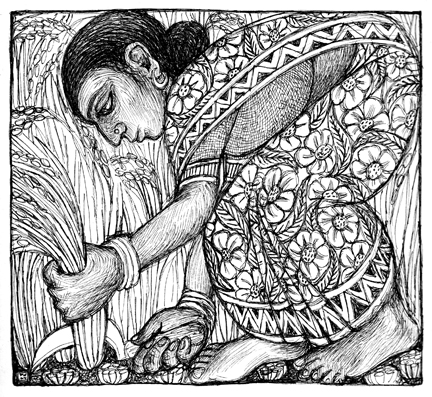
When Smita was harvesting, the very important question of rain came to her mind. She explained,

(If there is rainfall, this crop will be damaged. Isn’t it?). We asked how she would know whether it will rain – thinking that maybe they ask an astrologer or some other authority. Smita laughed and said,

(Don’t know, nah! Don’t know anything like that. But then what do we do? You know, if we have to do it faster, then we hire people. Take as much as required and finish it quickly.)
It is interesting that Smita emphasizes not knowing and uncertainty. We are reminded of professional scientists we have known who also emphasize how much they do not know and how tentative their conclusions and predictions are. This contrasts with some religious fundamentalists who sound very sure of their statements.
d) Comparing, categorizing, analyzing and doing things differently
Smita did not guide the bullocks in ploughing the field – this is considered men’s work. However, she did participate – here she is breaking the clods of soil turned over by the plough.
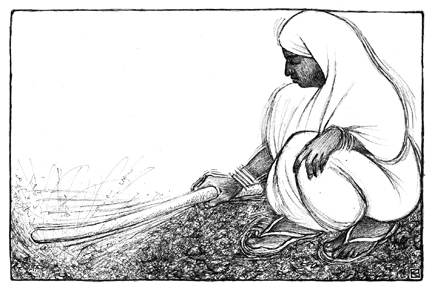
Smita explained all the details of ploughing to us. As we watched Bhimraj and Namdev take turns with the plough, it appeared to me that the son had probably not yet learned the correct method from his father. But Smita explained that Bhimraj has a different and better technique:

(If this [pointing to the ground] is the plot of land, his plough goes once in this direction and once in that direction. Like, when the first time it went [this way], the second time it goes halfway [overlapping]. This way. It should be top-notch quality. This is not the case with him [Namdev]. Once this way. Once that way. Finish the job and leave. This is how it is with him [Namdev].)

She explained that it was because of their different temperaments: Namdev was a little hot-headed and careless, while Bhimraj was calm and more of a perfectionist – and the bullocks listened more to Bhimraj.

Smita also explained that deep ploughing would turn over more soil, but it would also leave larger clods that would be a lot of work to break up afterwards. She knew through experience. They do deep ploughing of the main field at the time of transplantation, when it is flooded.
As with each aspect of cultivation, there were conflicts between different effects and processes. Ploughing is not a harmonious process that leaves nature undisturbed. Ploughing and cultivation change the soil and the plants, animals and microbes. Smita and Bhimraj explained and gave us handfuls of soil to show us how the rabbing and ploughing was affecting the soil, heating it, killing weeds and pests and making the soil soft and light. We observed that there is no “Balance of Nature” – everything is in a state of continuous change due to so many opposing forces of both nature and people.
Smita and Bhimraj were not just copying or learning from past generations. They were learning new techniques and understandings through a process of experimentation, observation, trial and error and conceptual analysis.
e) Directly observing and communicating
Whenever Smita and other members of the family tried to teach us something, they did so by picking up things and showing us for direct observation. Smita explained how and why she identified and removed different kinds of weeds, keeping some kinds for the family to eat, other kinds for the animals and using others for compost.
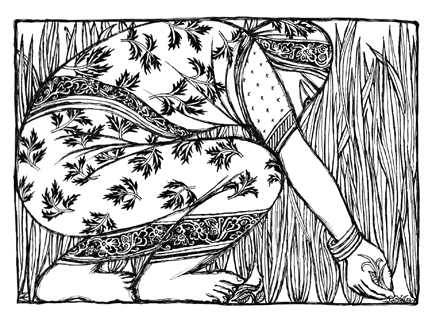
Smita did most of the tedious and difficult work of monitoring and weeding the paddy field as it grew. This could not be just based on school ‘learning’ that is just memorizing. The weeds and pests keep changing. It requires continuous learning that keeps changing with the environment, the needs and the sopoec (social-political-economic) constraints. They keep changing their methods, but they are constrained. Cultivation requires communicating and sharing experience with neighbours, other farmers and scientists. Very advanced means of communication are close by: high-speed smart phones are being used by people in metal boxes whizzing down the highway that cuts through Smita’s front yard. But Smita cannot even afford a stupid phone. There is no library in the village. The TV was usually out of order. The electricity is intermittent. Inadequate communication was impeding her science. She told us that their work was too hard and they wanted – but could not afford – new technologies such as phones, tractors, vehicles and pumps.
What is science?
When we asked Smita what is science, rather than saying it is a body of knowledge, she said,

(Now, science means to do different kinds of discoveries, then don’t we call it science?) She also explained how she did science in her own life by discovering how to solve problems, do things in new ways and economically progress by constructing a roadside shop. She clearly saw that the solutions to their problems are not just technological, although they do require modern technology. To her, there was no separation between natural sciences and social sciences.
Through Smita’s example, we can start to imagine how creative science could be done for and by people, if it was not being subverted by class division and the profit motive.
Yes, Smita was a peasant farmer. But, working collaboratively with the rest of her family, she was also a very important scientist.*
*Smita, at the age of 36 or so, passed away due to Covid in 2021. Perhaps she would still be living if the society was not based on a system in which a few rich men (such as the CEO of a pharmaceutical company) have the right to make crores by deciding that all people do not have the same right to healthcare.
The author is a visual artist, scientist and educator, based in India since 1985. She has been illustrating and writing books for children, teaching from KG to post-graduate levels and doing research on how people learn (and previously in computational structural biophysics). She can be reached at haydock@gmail.com. You can also visit her Instagram account @haydock.karen or her website www.khaydock.com.
